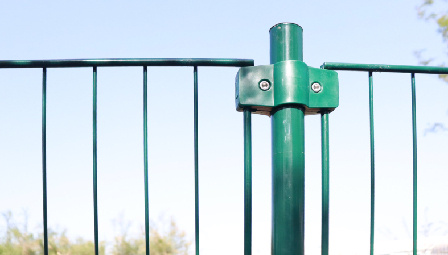Building Durable Trellis Posts for Healthy Grape Vine Growth and Support
Ліст . 08, 2024 03:25
A Guide to Grape Vine Trellis Posts
When it comes to cultivating grapevines, one of the most critical aspects to consider is the support system. A well-structured trellis not only supports the vine but also maximizes productivity by allowing for better sunlight exposure and air circulation. Among the key components of a grapevine trellis are the posts, which form the backbone of this support structure. In this article, we’ll explore the different types of grape vine trellis posts, their materials, installation methods, and tips for maintaining them.
Types of Trellis Posts
Grapevine trellis posts can be categorized into several types based on their design and function
1. End Posts These are sturdy posts positioned at the ends of the rows. They bear a significant amount of tension as they support the entire trellis system and keep it stable.
2. Intermediate Posts Placed between the end posts, intermediate posts help maintain the tension of the wire and provide additional support. They are essential for long rows of grapevines.
3. Corner Posts Located at the corners of the vineyard, these posts are essential for turning corners in the trellis system and are typically reinforced to withstand extra forces.
Materials
The choice of material for grapevine trellis posts is crucial to ensure durability and functionality
. Common materials include- Wood Often used for its aesthetic appeal and natural look, wooden posts can be quite sturdy. Cedar and redwood are popular choices due to their resistance to rot. However, they may require more maintenance over time.
- Metal Steel or galvanized posts are incredibly durable and resistant to weather elements. They can withstand heavy loads and last for decades without significant deterioration. However, metal posts might have higher initial costs and can become hot in direct sunlight.
- Concrete These are among the most durable options available. Concrete posts can support heavy vines and remain stable over many years. However, they are the heaviest option and can be challenging to install.
- Plastic Composites Some vineyards are turning to recycled materials or plastic composites for posts. They are lightweight, resistant to rot, and environmentally friendly, although they may not provide the same strength as metal or concrete.
grape vine trellis posts

Installation
Installing grape vine trellis posts requires careful planning and execution
1. Location Determine the layout of your vineyard and the spacing between the posts. Generally, end posts should be placed about 6 to 8 feet apart, while intermediate posts can be spaced about 10 to 12 feet apart depending on the row length.
2. Depth The depth of the posts is crucial for stability. A good rule of thumb is to bury at least one-third of the post height in the ground. For example, if using a 6-foot post, at least 2 feet should be underground.
3. Alignment Ensure that the posts are vertical and aligned properly as they should form a straight line for proper wire tensioning.
4. Tensioning Wire Once the posts are in place, the trellis wires must be installed and tensioned properly. This will provide the necessary support for the growing grapevines.
Maintenance
To ensure the longevity and functionality of your grape vine trellis posts, some periodic maintenance is essential
- Inspect Regularly Check for any signs of rotting, rust, or physical damage. Early detection can help you replace or repair posts before they compromise the entire system.
- Re-tension Wires Over time, wires may loosen due to plant growth or environmental factors. It’s essential to check and re-tension as needed.
- Protect from Pests If using wooden posts, consider applying a protective sealant or treatment to deter pests and prevent rot.
In conclusion, the choice, installation, and maintenance of grape vine trellis posts are essential elements for a successful vineyard. By investing time and resources into a well-structured trellis system, growers can enhance grape quality, yield, and ultimately, the success of their wine production efforts.




















